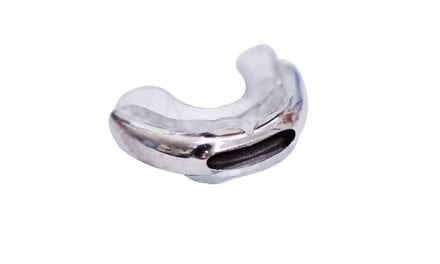The vast majority of systems are siloed, but some companies are working to connect care for sleep apnea management.
The US health care system is fragmented, and the subspecialty of sleep medicine is no exception. Doctors, businesses, payers, and patients grapple with disjointed information pathways between and among one another.
As the market grows, the need for interoperability—allowing for seamlessly connected devices and easier sharing of critical data among various stakeholders—grows as well. Though challenges are numerous, some companies are working on connecting care for CPAP users.
Patients’ long journeys to diagnosis and beyond—through evaluations, sleep tests, and determining the best treatment—makes for a lot of scattered health data. At sleep diagnostics company Nox Medical, chief product officer Ingvar Hjalmarsson’s team is working on solutions to make navigating that maze easier for patients.
“This is very much dominating a lot of our product strategy at the moment. The number of sleep experts is actually going down, but the number of aware patients is going up. So we will have future challenges when it comes to providing these patients with access to care,” he says. “And the answer to that are found in cloud solutions that help sleep specialists do more, with less. Cloud [compared to physical server] solutions, done correctly, can increase the efficiency for most stakeholders in the ecosystem of sleep care.”
The growing popularity of home sleep testing (HST) is one factor in the increasing importance of interoperability, says Hani Kayyali, CEO of home sleep testing company CleveMed. Insurance companies agreeing to accept HST is driving “quite a bit of volume” in sleep medicine, he says.
“The resources are tied up with the demand,” Kayyali says. “Sometimes the resources aren’t available to really dedicate to create these interoperability kinds of functions.”
Sleep therapy and diagnostics company Philips has made strides in tapping into the homecare side of the market, says Tim Murphy, business leader for Philips One SRC [Sleep and Respiratory Care] Services. “Where we’ve made the most progress is really realizing that the homecare provider constituency…that there are other systems and other application platforms that are critical to execute the business side or the reimbursement side in these markets,” he says.
The interoperability of sleep medicine devices with, say, patients’ electronic medical records (EMR) is disjointed enough before taking into account the fact that providers in the United States don’t use a standard EMR.
“I think the greatest challenge is the number of—and diversity of—systems still being used in our health care systems,” says Jim Doty, senior director of marketing for Philips SaaS and Services in the field of sleep and respiratory care. “There’s not a consistent or dominant EMR system for primary care doctors in North America.”
Access to a patient’s data can be further complicated if home testing or home treatment is involved.
“Overall in the homecare environment, I think it’s a far more fragmented care system” than in an acute care setting, Philips’ Murphy says.
Interoperability is important throughout the entire health care system, but it’s especially critical for sleep apnea patients who might need support from various specialists and physicians to adhere to their treatment plan, says Annie McBride, vice president of sleep marketing product management, North America, at sleep therapy and diagnostics company ResMed.
Remote monitoring of CPAP therapy raises those adherence rates from about 50% to 75%, she says.1 As one example of success with interoperability at ResMed, McBride points to the more than 1,000 customers using integrations through the company’s systems, enabling clinicians using an electronic health record system that integrates with ResMed’s AirView program to view patients’ ResMed device data within their home system.
Looking to the future, companies expect artificial intelligence to bring new possibilities for synthesizing information, says CleveMed’s Kayyali. “If there’s a good way for the data formats to be interconnected or to be somewhat following the same standard, then scientists can apply the artificial intelligence to a larger pool of data,” he says.
A lack of standards for devices to talk to each other or to software programs continues to present challenges, says Mathew Mammen, co-founder of sleep management platform Somnoware. Manufacturers agreeing to a common standard will be an important step forward.
“Device interoperability is paramount for really getting ahead of the health care costs that we have,” Mammen says. He points to a 2013 report from senior health care nonprofit West Health Institute, which found that widespread medical device interoperability might potentially produce annual savings to the tune of $30 billion in the US health care sector.2
At ResMed, McBride says the company is exploring “deeper collaboration” with major electronic health record platform vendors to allow doctors to have access to sleep and respiratory data within their everyday workflow.
A.J. Zak is a journalist based in Chicago.
References
1. Cistulli PA, Armitstead JP, Liu D, et al. Real world PAP adherence: Results from a Big Data approach in more than two million patients. Am J Respir Crit Care Med. 2018;197:A4391.
2. The value of medical device interoperability. West Health Institute. March 2013. Available www.westhealth.org/wp-content/uploads/2015/02/The-Value-of-Medical-Device-Interoperability.pdf





